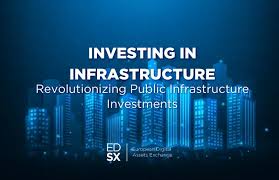IT IS YOUR MONEY
Digital Assets and RWA: Redefining How We Invest in Infrastructure Projects
Infrastructure development requires massive capital investments, often sourced from governments, pension funds, and institutional investors. Digital assets and real world assets (RWA) are redefining this space by enabling tokenized infrastructure bonds, transparent project tracking, and global investor participation in large-scale developments.

Tokenized Infrastructure Bonds for Broader Access
Municipalities and development banks can issue tokenized bonds backed by real-world infrastructure assets such as highways, bridges, and power plants. These bonds offer investors predictable returns while enabling governments to raise funds efficiently.
Real-Time Project Monitoring and Performance Reporting
Blockchain-based dashboards track construction progress, budget utilization, and environmental impact metrics in real time. This level of transparency builds investor confidence and supports better governance of public and private infrastructure initiatives.
Real-World Example: World Bank and Blockchain Bond Issuance
The World Bank issued a blockchain-based bond called "bond-i" in collaboration with Commonwealth Bank of Australia. This pilot demonstrated how digital assets and RWA can streamline bond issuance, reduce costs, and improve investor access to infrastructure financing.
Liquidity Solutions for Long-Term Investments
Infrastructure investments typically lock up capital for decades, but tokenization introduces secondary market trading opportunities. Investors can sell portions of their holdings before maturity, enhancing portfolio flexibility and attracting a broader range of participants.
To explore how digital assets and RWA are transforming infrastructure investment and public-private partnerships, visit DigitalAssets.Foundation for expert analysis and a FREE consultation.

More News
© 2025
